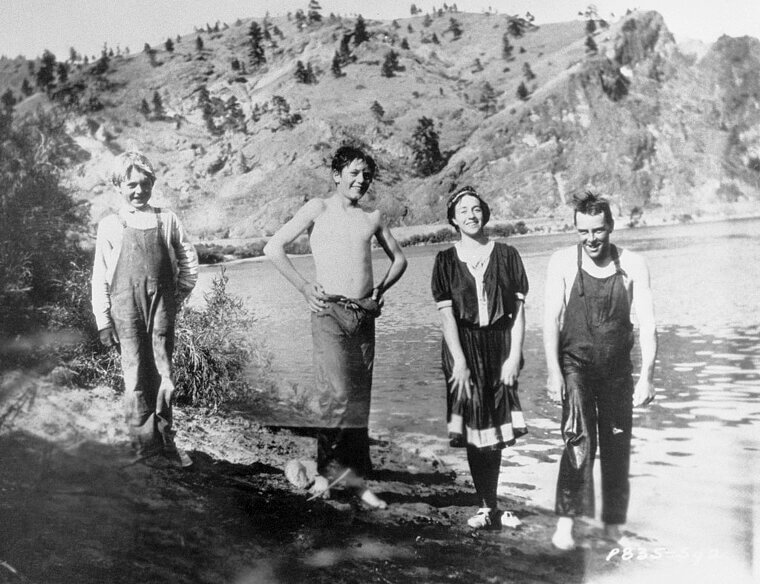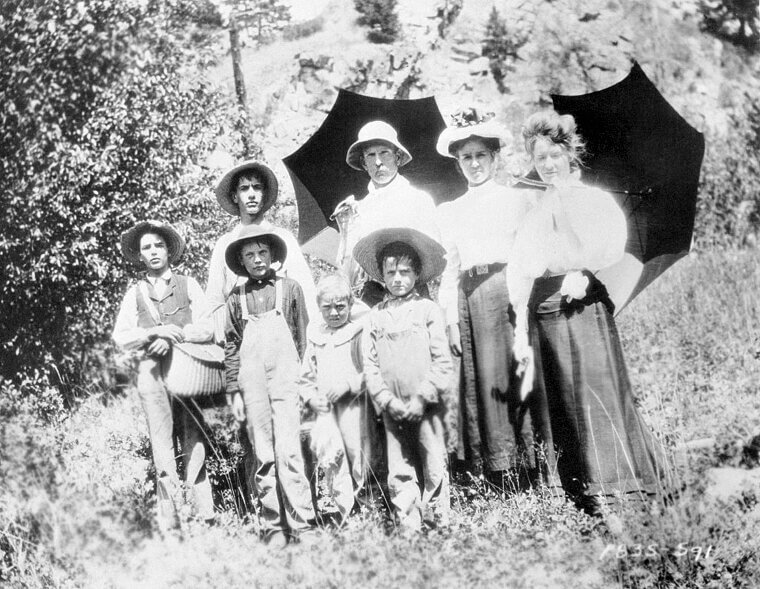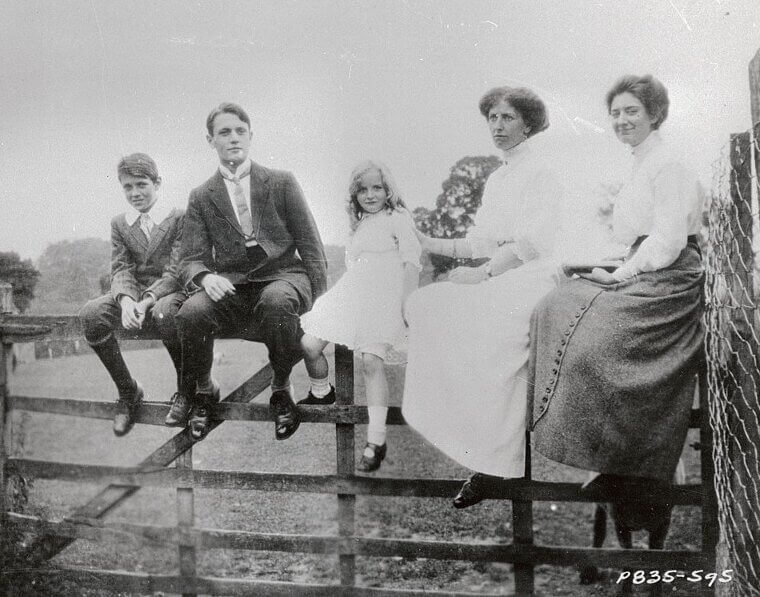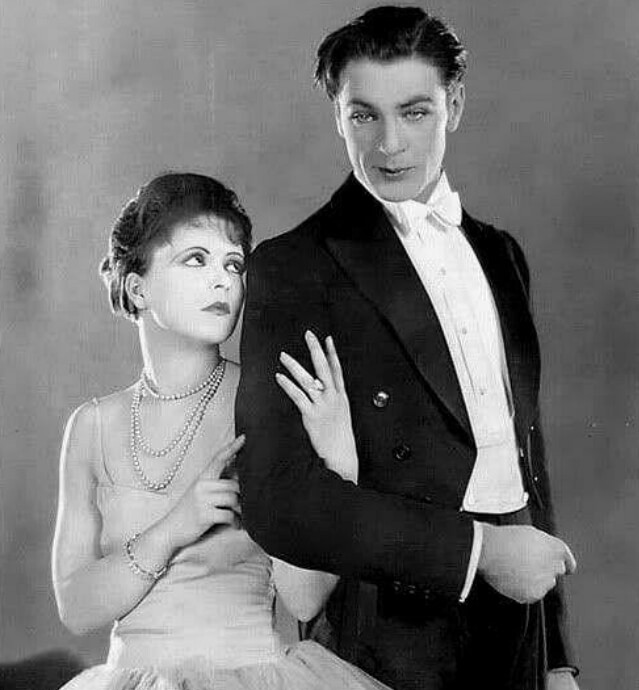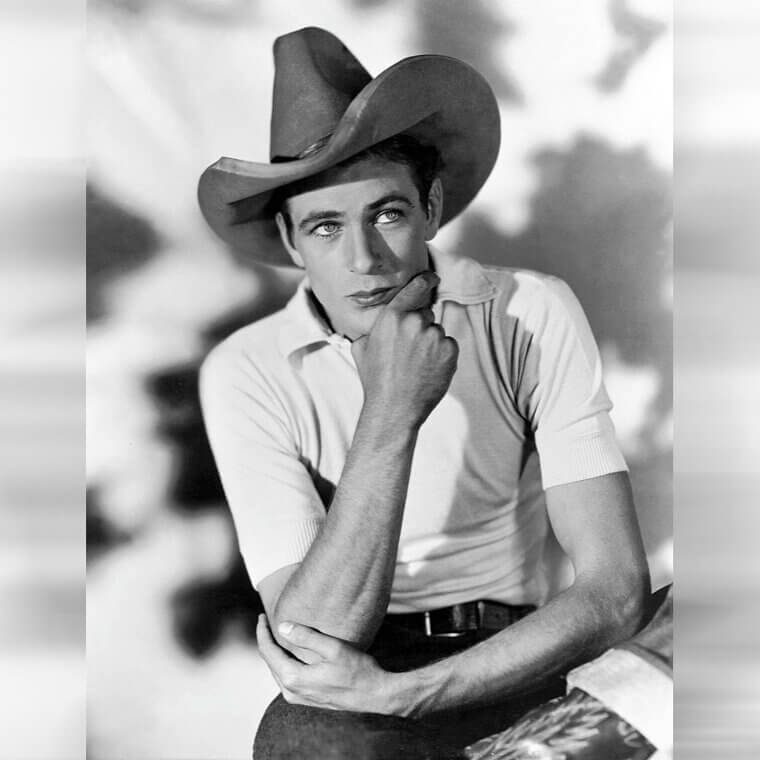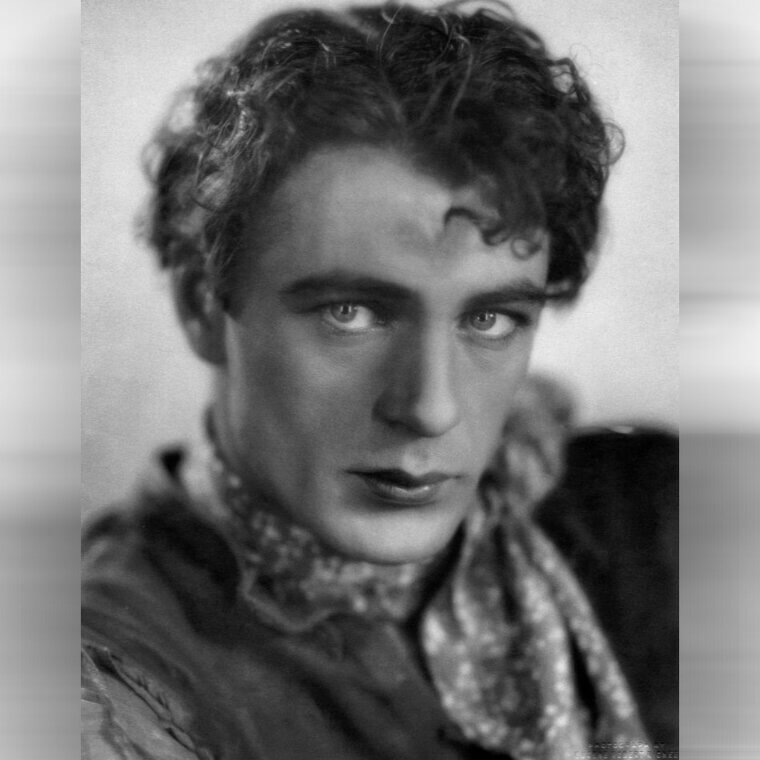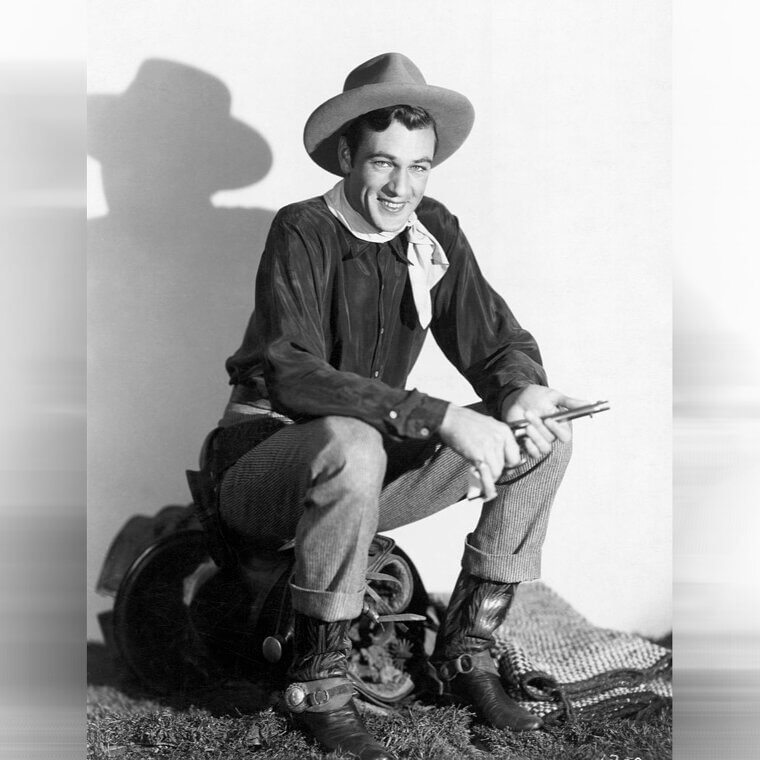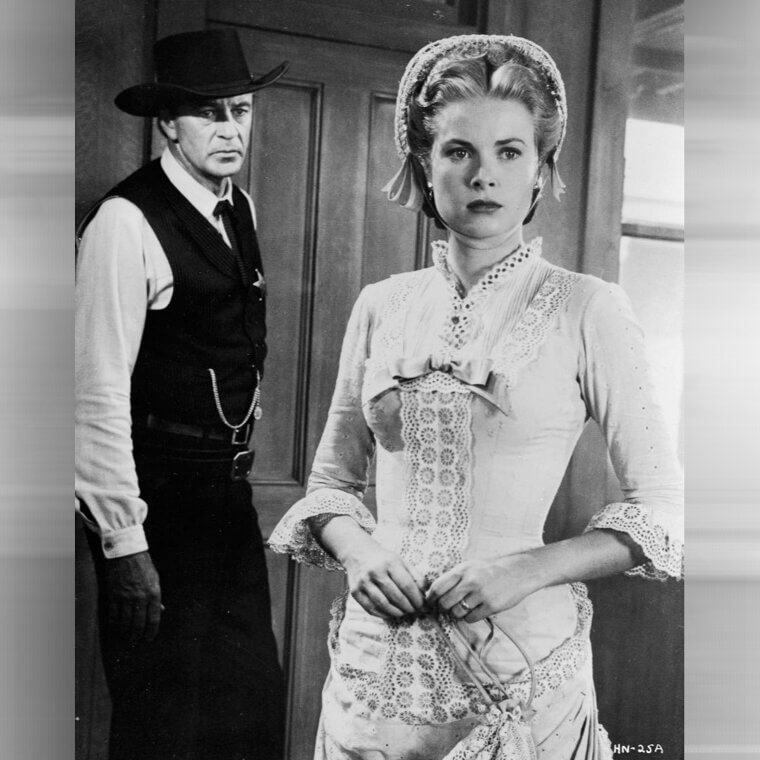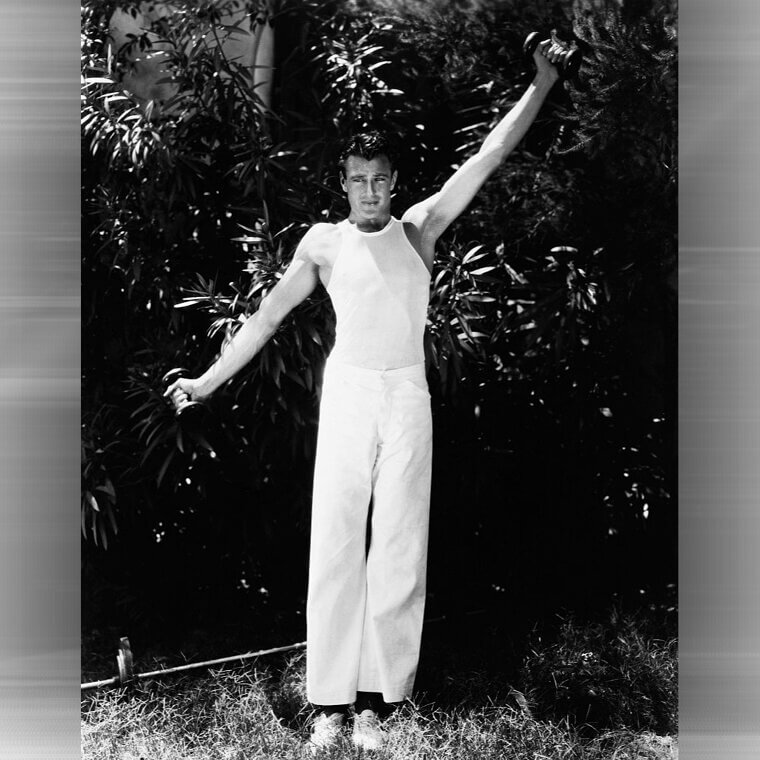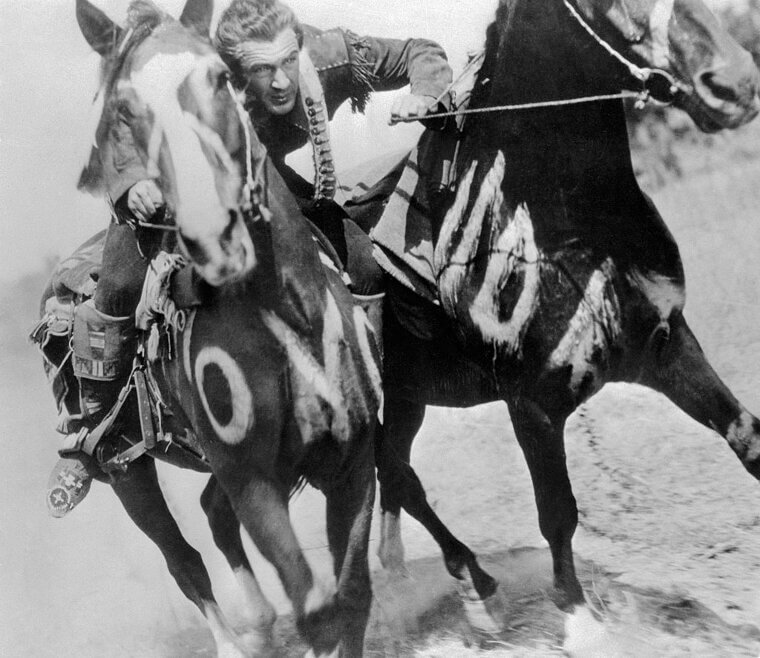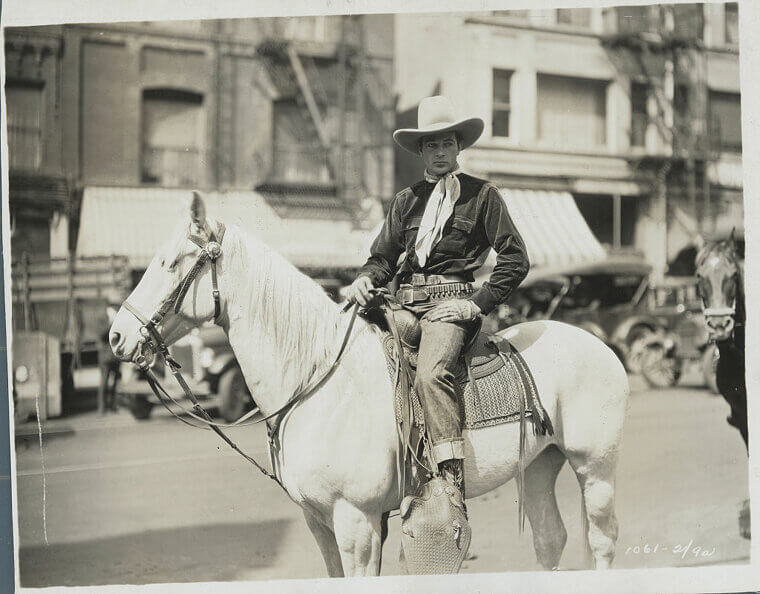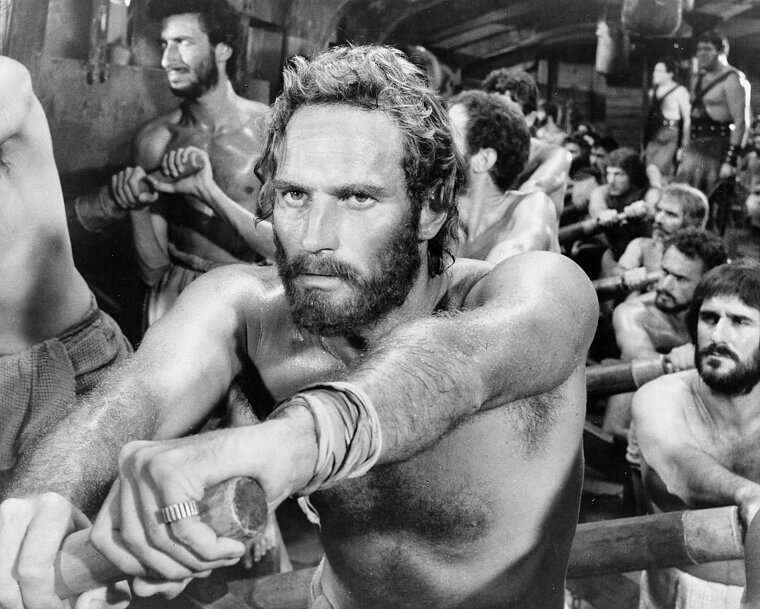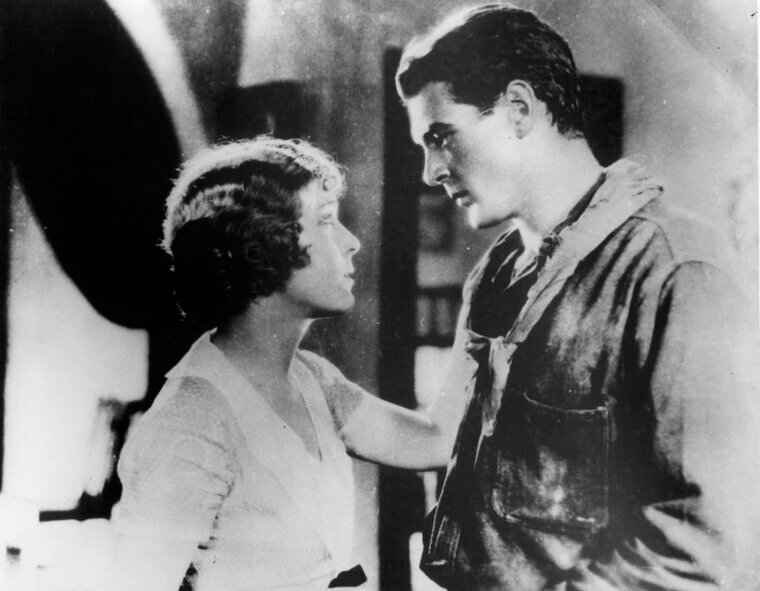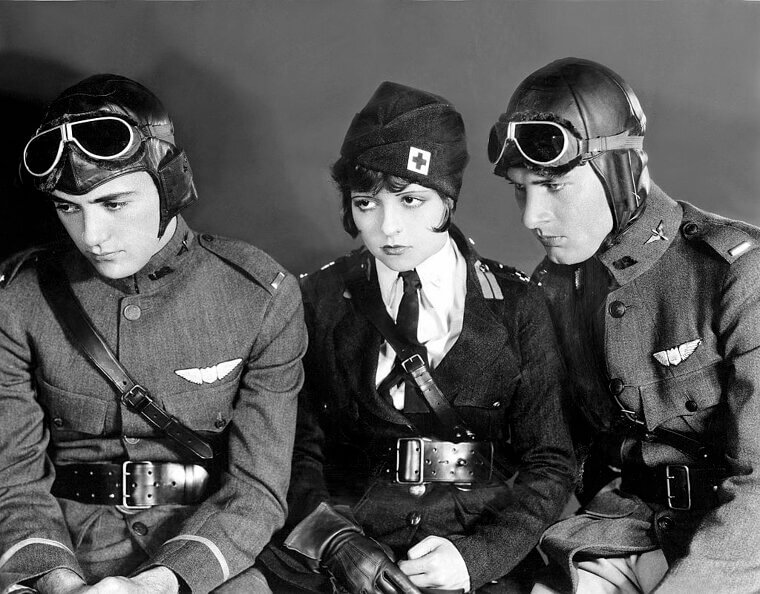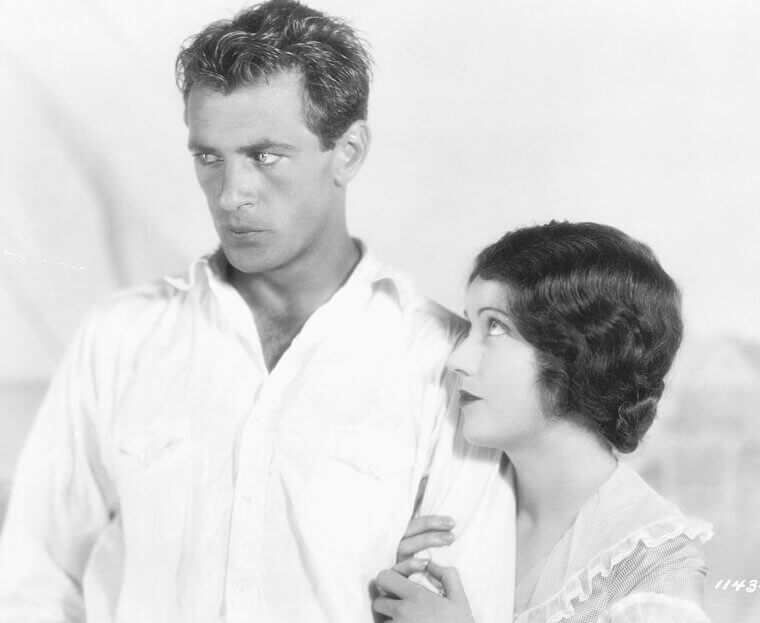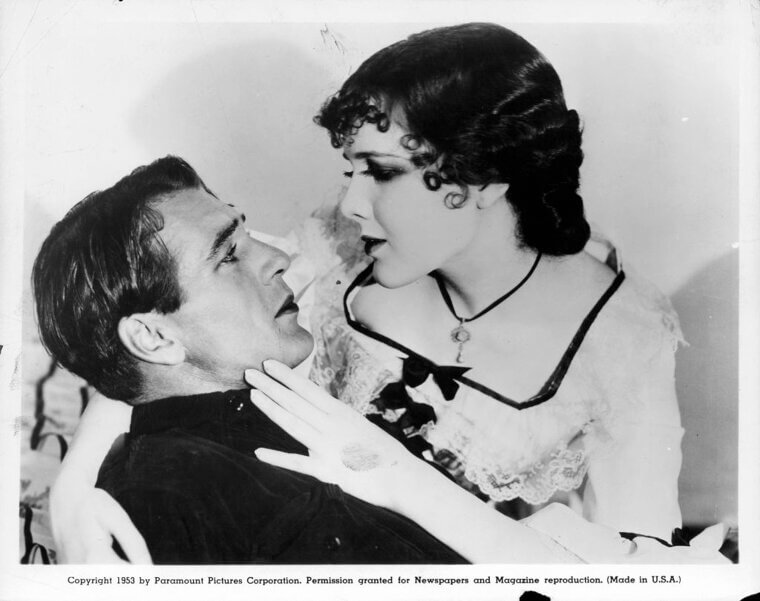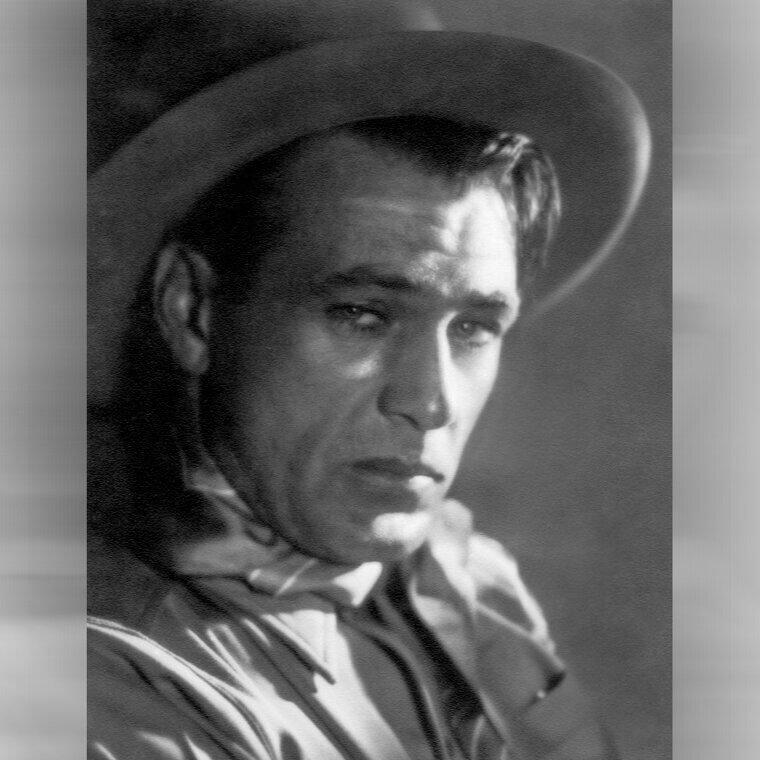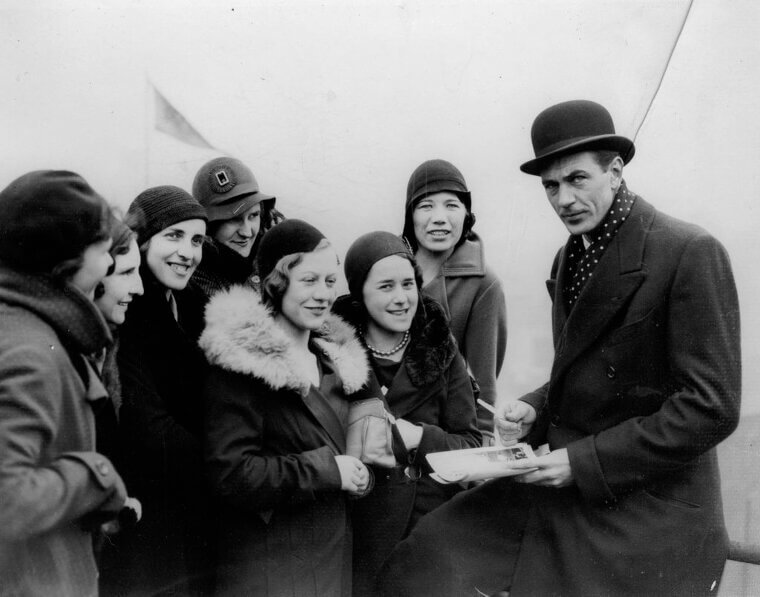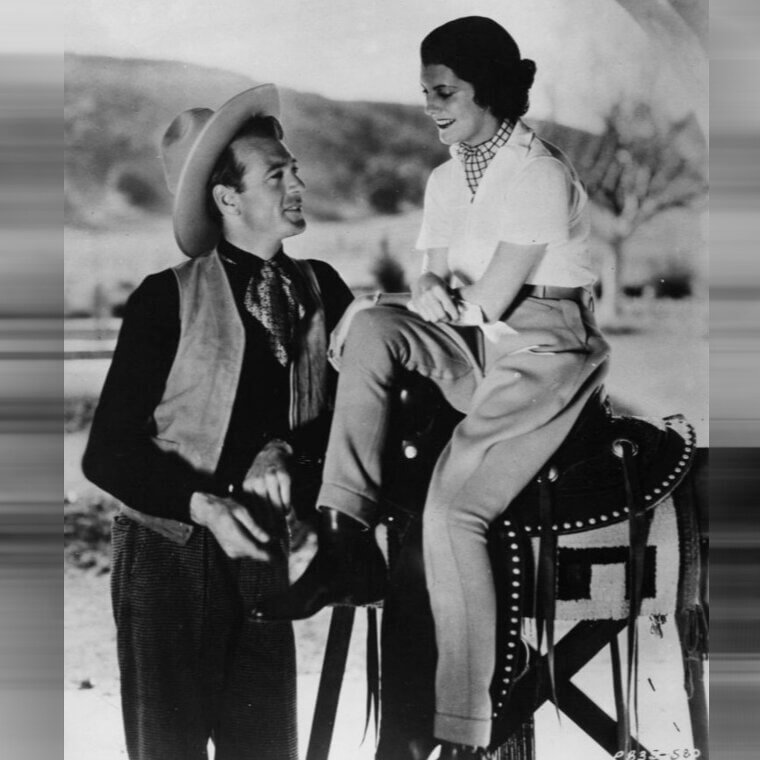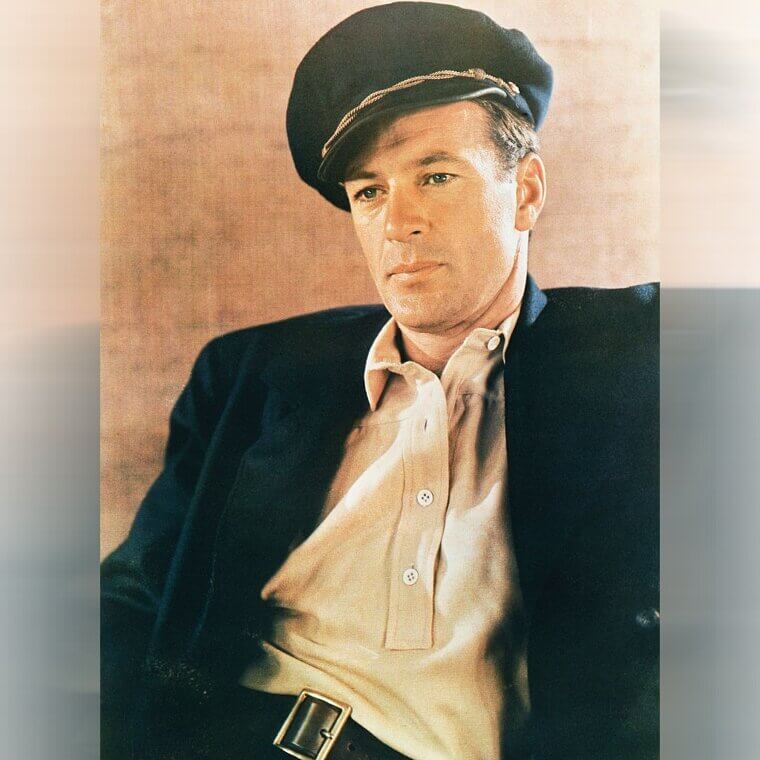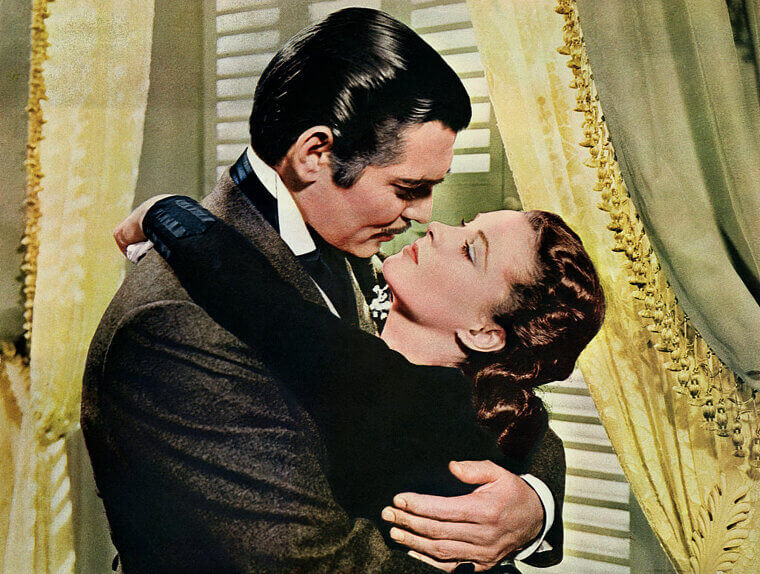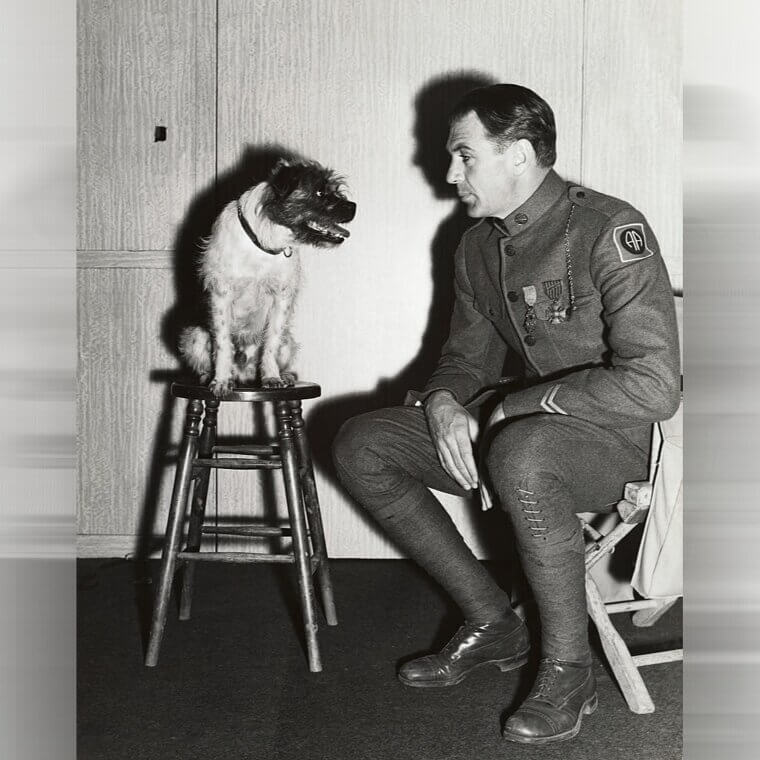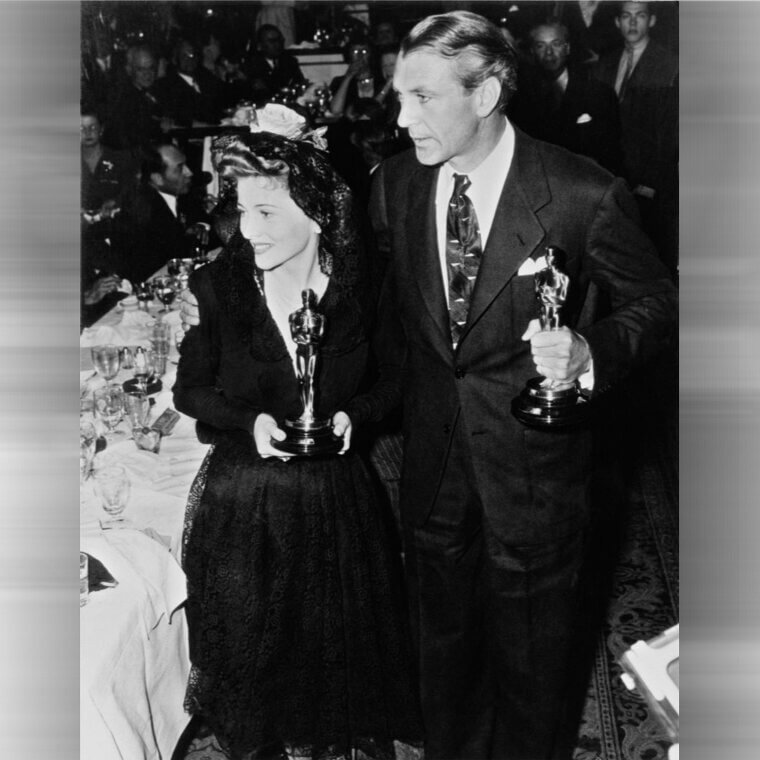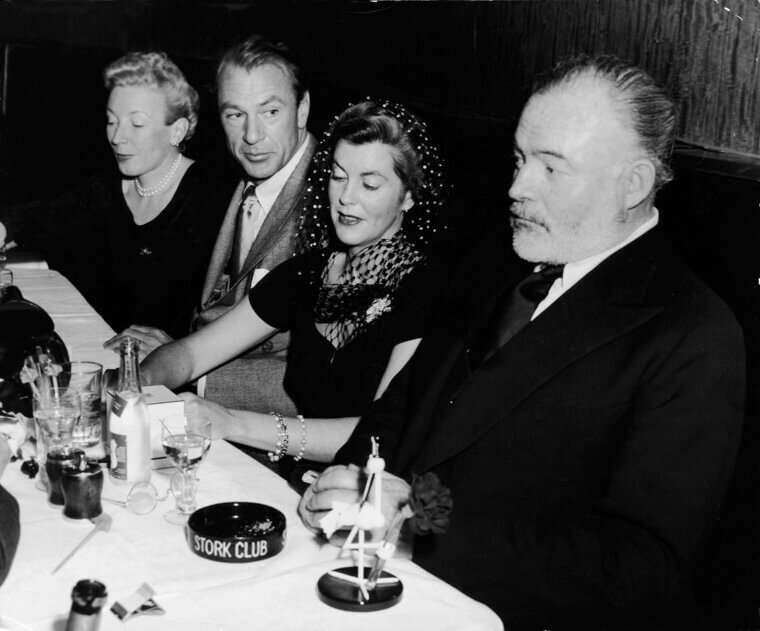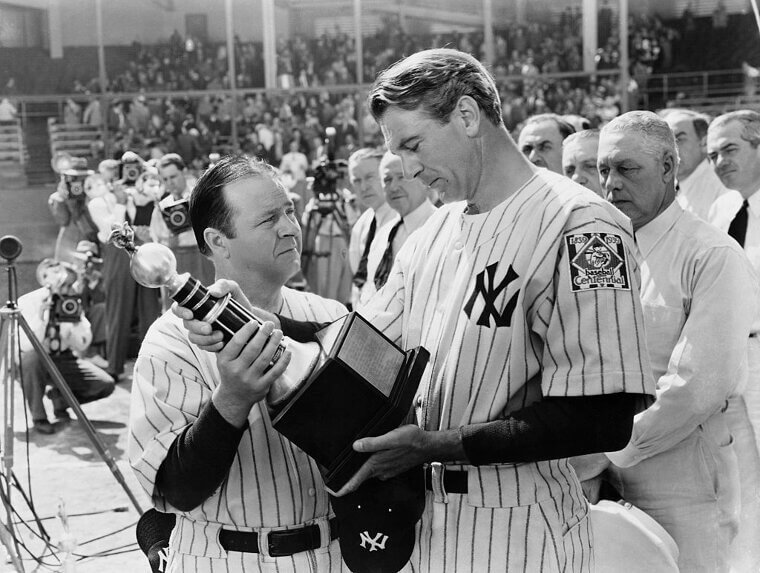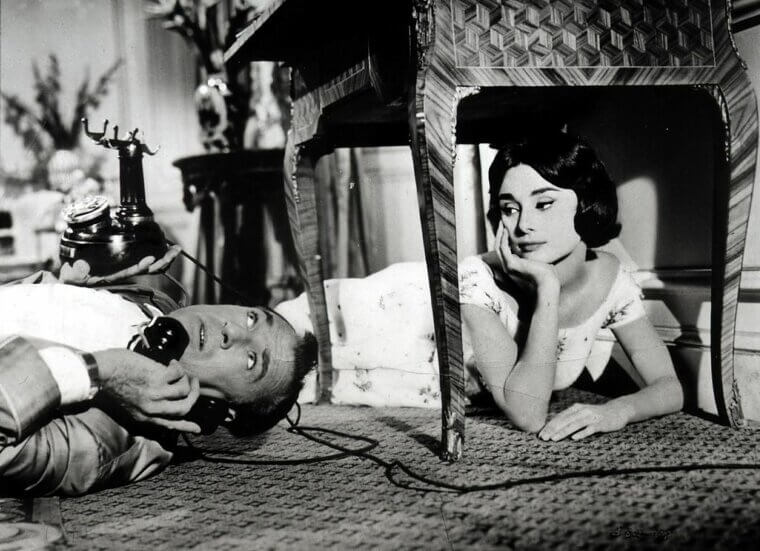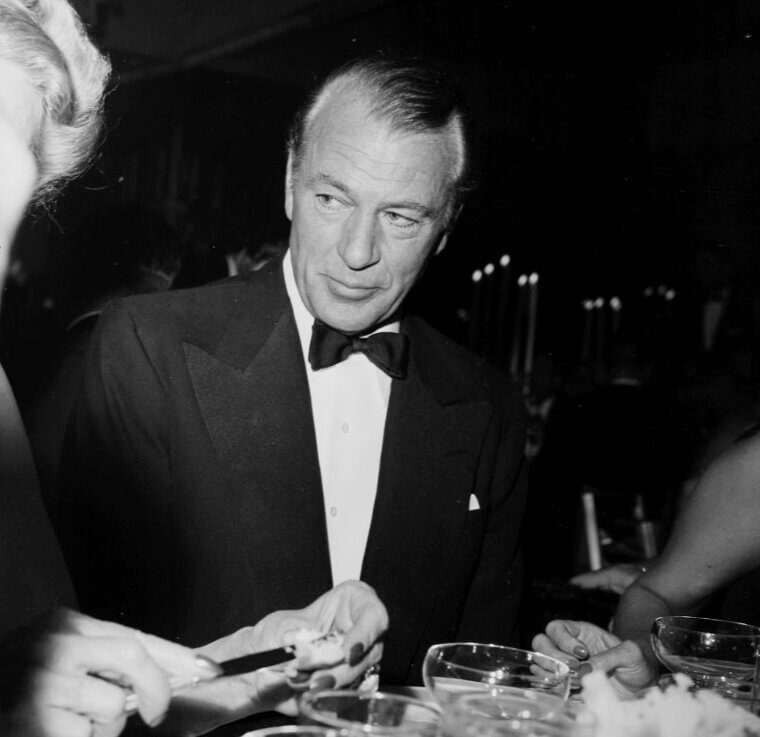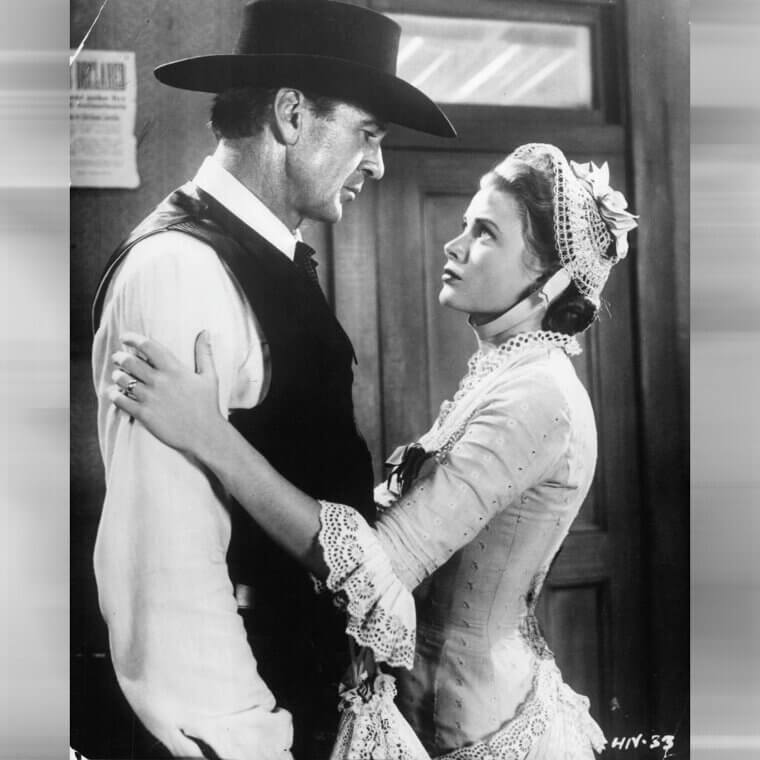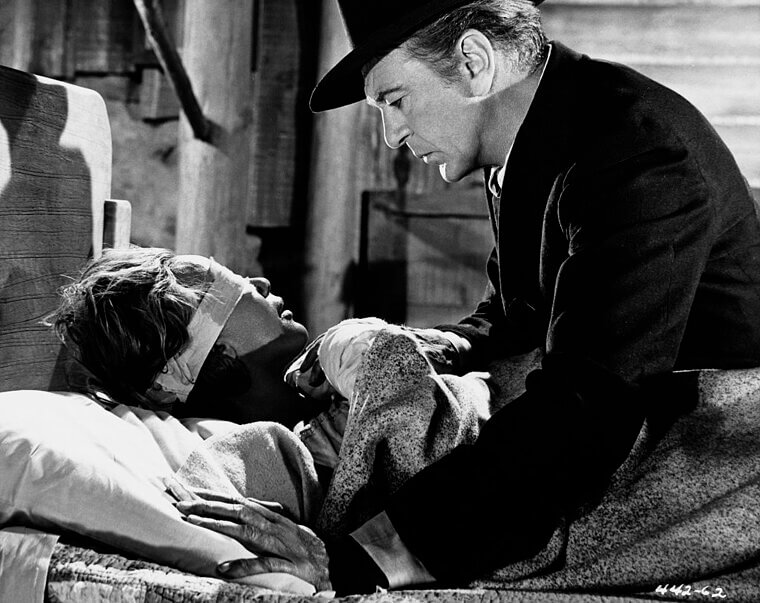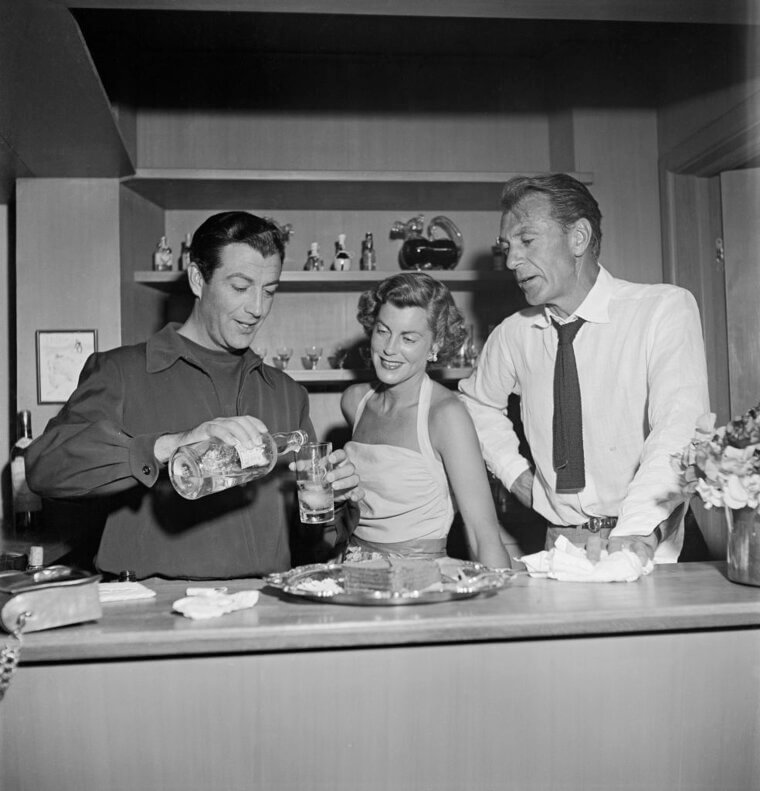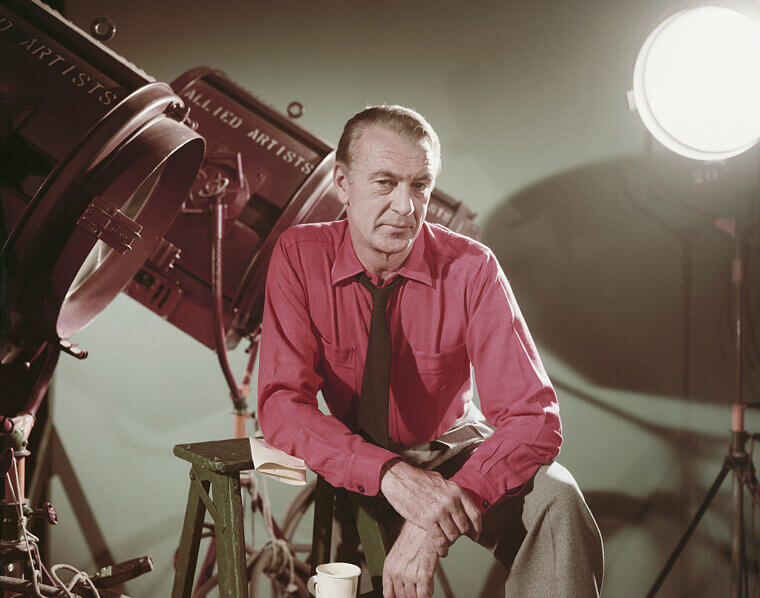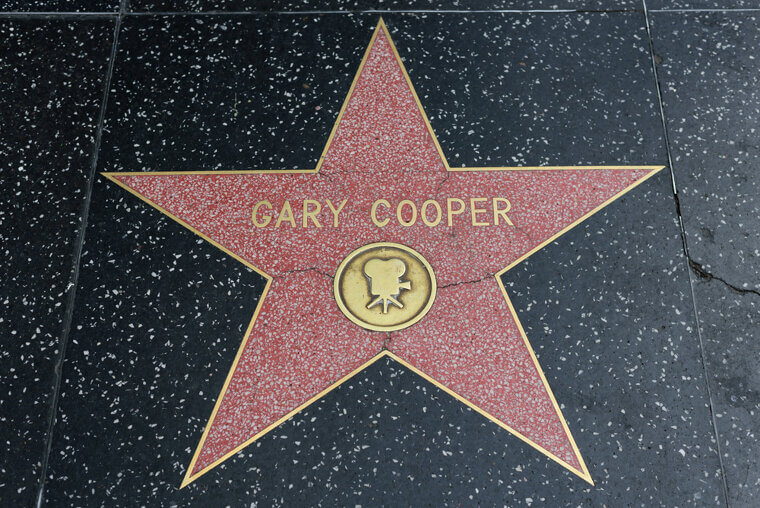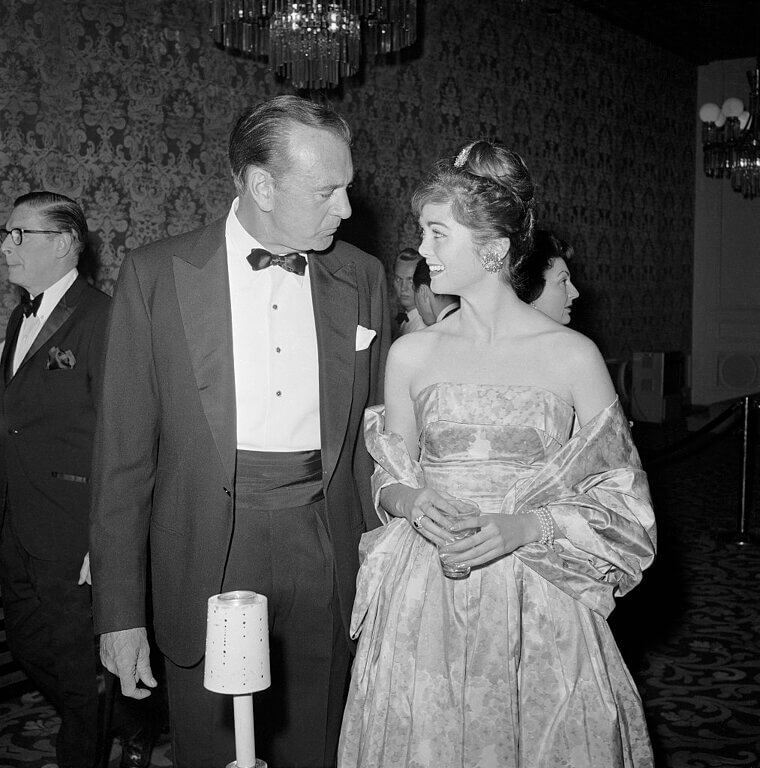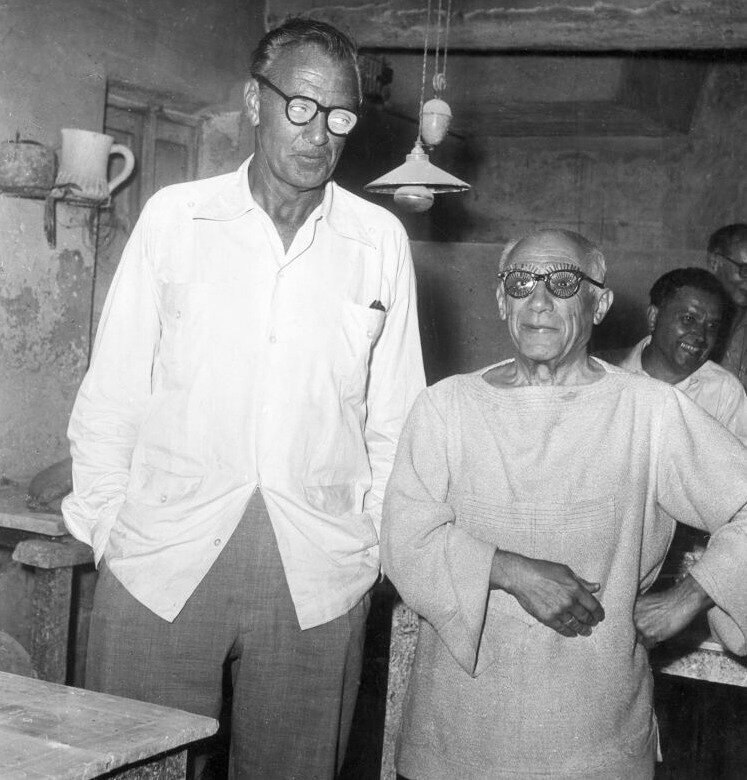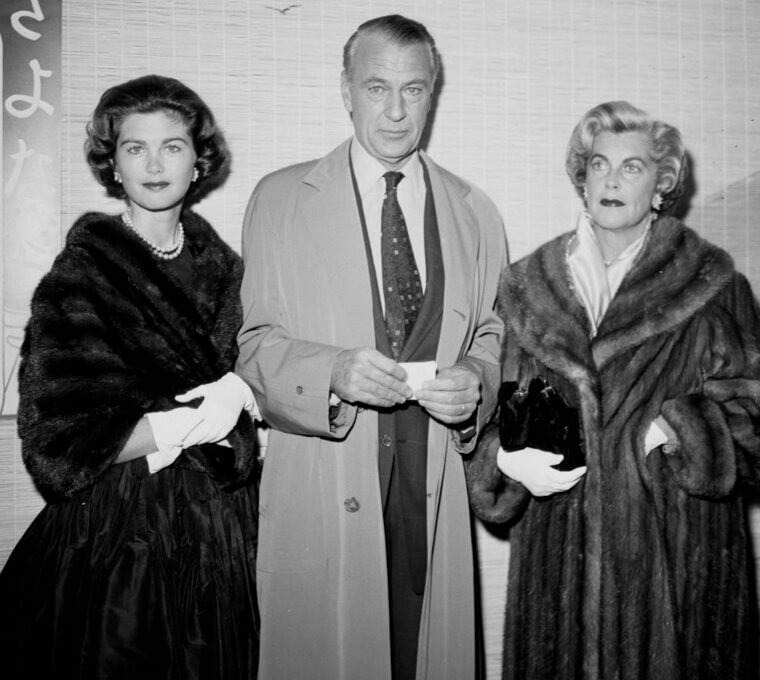What's in a Name?
One thing you might not know about Gary Cooper is that Gary Cooper wasn't his legal name but rather a stage name he adopted many years into his acting actor. His parents, Alice and Charles, actually named him Frank James Cooper on the day of his birth on May 7th, 1901. But it's not that Cooper didn't like his name or appreciate his parents. In fact, he loved his family more than anything else in the world.
Cooper's father worked as a lawyer and worked incredibly hard to provide for his family. Unfortunately, it just wasn't enough for them to be comfortable, and the family struggled to stay afloat.
Chasing the American Dream
For Charles Cooper, struggling to pay the bills wasn't the life he had dreamt of for himself and his family. Originally from England, Charles and Alice had moved to the United States in search of the American dream. They had hoped for riches and happiness, and Charles had assumed that his skills as a lawyer would put him a cut above the rest. However, this wasn't the case at all - and Charles had to make some tough decisions.
Although Charles loved his job as a lawyer, he needed to provide for his family and his young son. So, he decided to buy the Seven-Bar-Nine cattle ranch in Montana in the hope that it would provide a stable home and lifestyle for his family. And it was just in time, too.
Life on the Ranch
Just one year after Charles bought the cattle ranch, he and his wife welcomed another son into the world. Arthur Cooper was born in 1907, and Frank took to being an older brother like a duck to water. He loved watching Arthur grow up, and he loved the fact that they had the run of the ranch to enjoy during their spare time. After all, they spent every free moment out in the wild, hanging out with the cattle, and riding the horses.
Yes, Cooper had learned how to ride horses almost immediately after the family moved to the cattle ranch. He was so talented that he even competed in local rodeos, but he had no idea how this talent would shape his subsequent career in Hollywood.
A Proper English Education
Although Alice Cooper could see that her eldest son loved life on the ranch, she also knew just how different life in America was from life in England. To be more specific, she knew just how different the education system was - and she didn't want her son to be exposed to the American education system. So, she decided to take Frank and Arthur back to England with her to ensure that they had a proper English education.
Cooper spent the next few years following strict protocols on school uniforms and homework and traded in days on the ranch with days learning English history, French, and Latin. Then, finally, his mom let him move back to Montana to finish his studies.
Getting Back on the Horse
When Cooper wasn't studying, he was still spending all of his free time on the horses around the ranch. But his ability to simply jump on a horse and ride around the ranch was taken away when, at age 15, he suffered a devastating hip injury. The injury left him with a very noticeable limp, but it didn't hinder his riding ability. In fact, his doctor told him that riding would actually help his painful hip.
As expected, horse riding did help to soothe the pain - but it didn't resolve the limp that he'd developed. In fact, it never went away, and can be seen in many of his most famous movies.
Going Back to School
Although Cooper knew that his mom wanted him to go through the education motions, the call of the ranch and the horses was just too much. Because of this, he decided to leave high school early and work on his family's ranch full-time. But his family weren't happy about it, and in 1919 his father made arrangements for Cooper to go back to school at Gallatin County High School in Bozeman, Montana.
It was during this high school stint that he met a woman who would change his life in ways that he could have never imagined: Ida Davis. She was his English teacher, and was the first person to see potential in the cowboy.
A Love of Art
It was Ada who introduced Cooper to the world of art and drama, and it wasn't long before he realized that he could be interested in something outside of the ranch. He became obsessed with art in every form, from studying the great artists of history to creating his own art. In fact, he loved art so much that he decided to resist the urge to go back to the ranch and enrolled at Grinnell College in Iowa to study it.
He thrived in this environment and loved showcasing his art on a bigger scale. He was even given the honor of being the art editor for the yearbook.
Entering the Big Wide World
However, when he graduated from college, he felt lost. Although he had a newfound dream to make a name for himself in the art world, he just didn't know how to do it. He knew he would need money to kickstart this career - and money wasn't something that he or his family had readily available. So, in order to save up some money, he decided to go back to his roots.
Between 1922 and 1923, he worked as a tour guide at Yellowstone National Park, offering tourists his expert knowledge of the wilderness. But those on his tours had no idea that their guide would eventually become one of the most famous men in Hollywood.
Trying to Find Work
After earning enough money to help him start afresh, Cooper decided to pack up his things and move to Chicago in an effort to become a full-time artist. But it wasn't long before he realized that the competition was so fierce he couldn't even get a foot in the door. So, he had no option but to move back to his family's ranch in Montana, and soon enough, he was bringing in solid income by selling cartoons to the local newspaper.
But his life changed once again when his parents decided to move to Los Angeles in 1924. On a whim, Cooper opted to move with them - and this set in motion a chain of events he could have never imagined.
Entering Tinseltown
As Cooper attempted to make a new life for himself in Los Angeles, he managed to find a few friends here and there. In fact, two of these friends were also from Montana and had been able to find work as extras and stunt riders on small Hollywood films. As they knew Cooper was a proficient horse rider, they introduced him to their employers and offered up his talents, too.
For a while, he was earning $5 for every day he worked as an extra and $10 for every day he worked as a stunt rider, which he enjoyed. But then, a man named Jim Slim Talbot changed everything for him.
A Dangerous Stunt Man
Although Cooper enjoyed working on movies, he began to wonder whether there was more to life than working as a stunt rider. It was often dangerous work, and he just didn't know whether it was worth it. Then, he met Jim Slim Talbot, a rodeo champion stunt rider who had been able to transition into the world of silent movies as an actor. When Talbot offered to introduce Cooper to big Hollywood directors and producers, he jumped at the chance.
Cooper made it known that he wanted to be seen as more than just a stunt rider or an extra, and the Hollywood honchos seemed intrigued. But they didn't offer him work right there and then.
From Frank to Gary
At this point, Cooper was still known by his legal name, Frank Cooper. And while he didn't think anything was wrong with his name, he soon realized that the name Frank just didn't seem to fly in Hollywood. In fact, he was told this after a chance encounter with Nan Collins, a casting director who wanted to help him make the big time. Collins asked him to consider changing his name, so that's exactly what he did.
But what should he call himself? It was Collins who came up with the idea of Gary, and Gary Cooper knew that it was the right name for him. It felt powerful, and it felt like a new start.
Opening up Doors
It was almost as though a switch had been flipped. Within months of changing his name from Frank to Gary, he had been able to add countless credits to his resume. He had also been able to free himself of the ties of stunt work and Western movies and was able to transition into the world of non-Western movies. These included the likes of Ben-Hur, The Johnstown Flood, and The Eagle.
With each new role, Gary Cooper was able to solidify his place in the acting world. And while he wasn't a huge name at this point, it didn't take him long to reach super stardom.
His First Official Salary
Although Gary had never really imagined an acting career for himself, being in front of the camera and bringing different characters to life just felt right. He knew it was where he was meant to be, and he knew that he was good. He wasn't the only one who thought that, either. In 1926, he was approached by Samuel Goldwyn Productions with an offer he couldn't refuse, and he signed a short-term contract with the film studio.
In exchange for working exclusively on their movies, Cooper earned a salary of $50 a week - and he loved it. In fact, one of his first movies with the studio was The Winning of Barbara Worth, where he played a ranch owner.
A Fight for Gary
In fact, his authenticity in front of the camera in this movie made such an impression in Hollywood that he was suddenly in the middle of a fight for Gary. On the one hand, Samuel Goldwyn wanted to keep him in their ranks and offered him a longer contract - but for the same amount of money a week. On the other hand, however, Paramount Pictures offered him a 5-year deal for $175 a week.
As you can imagine, Cooper opted to go for Paramount, and this decision definitely paid off. In fact, one of his first movies for Paramount, called Wings, won the Academy Award for Best Picture.
A Household Name
It was Cooper's decision to move to Paramount that ultimately made him a household name. He was finally able to star as a leading man in impressive movies with big budgets, and everyone was starting to know who he was. Thankfully, everyone seemed to love everything about him. They were impressed with his acting talent, but they were also intrigued by his quiet nature and many were even overwhelmed by his handsome looks.
Thanks to this movie, his earnings also increased. Although he was still at the start of the game, he had been able to work his way up and earn around $2,750 per movie.
Working With Leading Ladies
Just as Cooper knew that he'd struck a good deal with Paramount, Paramount also knew that they'd struck a good deal with Cooper. They could see that he was the man of the moment, which is why they wanted to capitalize on their asset and cast him in as many movies as they could. This worked in everyone's favor, and also gave Gary the chance to work with some of the best leading ladies in Hollywood.
Over the next few years, he worked alongside the likes of Florence Vidor, Colleen Moore, and Evelyn Brent, and he seemed to love every second of it. After all, he was a notorious ladies man.
His Big Break
The most famous actors in history normally have one movie that sticks out more than most. By the time 1929 came around, Gary Cooper was already a huge name in Hollywood, but he hadn't had that big break yet. He didn't have to wait long, though, as he was cast in the hugely famous movie The Virginian that same year. It was this movie that truly pushed him to the forefront of everyone's minds.
This was his first stint as a leading man in a huge production, and his ability to transform into a rugged cowboy took the world by storm. In fact, it solidified his place as a Western legend.
The Western Man
From that moment on, Gary Cooper became Paramount's quintessential Western cowboy. Of course, he had the acting talent and the on-screen presence, but he also had the experience and the know-how that made playing a cowboy incredibly easy. He was a natural, and everyone could see it. That's exactly why Paramount chose to cast him in Western movies such as The Spoilers and The Texan, and why they proved to be so popular.
There was something about Gary in these movies that made him stand out from other Western actors. While he was talented, he was also quiet and brooding - and this intrigued fans.
A Ladies Man
This quiet and brooding nature was extremely attractive to many women, and it should come as no surprise to learn that Gary Cooper had a whole host of women who wanted to date him. He received thousands of letters from female fans every week, and he also spent his free time schmoozing with some of the most famous ladies in the entertainment business. In fact, he was known as somewhat of a ladies man.
Although Gary reportedly had affairs with major Hollywood starlets, he also appreciated the quiet life. So, he kept his personal life behind closed doors and tried not to make it the topic of conversation.
Taking a Much-Needed Break to Travel Europe and Africa
By the time 1931 came around, Gary Cooper was exhausted. Although he loved working in the industry, he had been pushed to his limits and made a whopping 10 films in just two years. He began to feel burnt out and started to crumble under the pressure, and he knew that it was about time that he took a break. So, he decided to leave the bright lights of Hollywood behind in search of peace and quiet in Europe and Africa.
From safaris to Mediterranean cruises, Gary made it his mission to see as much of the world as he possibly could - and he returned to Hollywood a new man. He was even able to re-negotiate his contract with Paramount and up his salary to $4,000 per week.
A Second Wind - And Meeting His Future Wife
Although part of Gary was worried that his break away from the spotlight would have impacted his career, it seemed to have the opposite effect. Everyone wanted more of Gary than they had ever had before, and he was more in demand than ever. Between the years of 1931 and 1936, he showcased his second wind and starred in as many movies as he could possibly add to his schedule - and he loved it.
This was a hugely pivotal point in terms of his professional career, but it was during this time that Gary also made some personal changes and decided to part with his bachelor days.
Getting Hitched
Although Gary Cooper had been having casual relationships with many women in Hollywood, he met a woman in 1933 who changed all of that. Veronica "Rocky" Balfe came from high society in New York, and he was instantly smitten when he set eyes on her. They first met at a party, and they had an instant connection. So instant, in fact, that they decided to tie the knot the same year they met.
Although she wasn't an actress herself, Rocky was well-loved in Hollywood. She attended elite Hollywood parties on the arm of her husband, and everyone found her to be incredibly stunning.
Expanding the Family
Four years into their marriage, Gary and Rocky expanded their hearts even further when they welcomed their daughter into the world. They named her Maria Cooper Janis, and Gary loved spending every waking moment with her. He would take her onto set with her so she could watch her father hard at work, and she grew up learning the ins and outs of the movie industry. Because of this, it was no surprise when she followed her father's footsteps.
When she was older, Maria also became an actress - but she also decided to expand her horizons by dipping her toe into the world of writing, painting, and photography.
Switching Studios
Having a daughter seemed to open up Gary's eyes to the fact that he had a wife and child to support, so he wanted to be financially stable. This prompted his decision to leave Paramount Studios in 1936. Although they had offered to extend his contract with them for $8,000 a week, he ultimately wanted more. And when Samual Goldwyn offered him a six-movie deal with a guaranteed salary of $150,000 per movie, he knew he couldn't turn it down.
Although Paramount tried to sue the actor and the competing studio, the case was thrown out due to insufficient proof. And this allowed Gary to become the highest-paid actor in Hollywood for the year of 1939.
His One Movie Regret
Although Gary Cooper appeared in some of the most famous movies of the 1920s and 1930s, he was offered even more. But with limited time in his schedule and the ability to work on the projects that he wanted to, he turned down more movie offers than he took. In fact, he was even offered the chance to take on the leading role in Gone With the Wind, which went on to become one of the most iconic movies of all time.
Although Gary was intrigued by the character of Rhett Butler, he didn't want to portray a 'bad boy' character. It's believed that the decision to turn down this role haunted him until his dying day.
Wanting to Branch Out
Turning down Gone With the Wind also served as a turning point in Gary Cooper's career. Until that moment, he had tried to maintain a certain image in Hollywood. He only really played heroic characters with wholesome storylines that made him seem like the Hollywood golden child. And while he didn't originally want to tarnish this image of himself, he began to wonder whether he should start to branch out and try something new.
He wanted to try playing a character with more complex emotions and storylines, and he didn't care if that meant that he'd have to play a villain. But how would he go about it?
Taking Home the Prize
It soon became clear that the opportunity to branch out would come directly to him, and he didn't need to search for it at all. In 1941, Gary Cooper was offered the chance to take on the lead role in Sergeant York and he jumped at the opportunity. He knew it would test him as an actor and put him out of his comfort zone, but that's exactly what he wanted.
Amazingly, this worked in his favor, too. The movie and his performance were so well received that Gary received his very first Oscar Award - and for the Best Actor category, no less.
Famous Friends
As one of the most famous men in Hollywood, you probably don't need us to tell you that Gary Cooper had some very famous friends. When he wasn't on set or spending quality time with his family, Gary was hanging out with famous actors, singers, and writers. In fact, one of his best friends was the famous writer Ernest Hemingway. And when they had time off together, they loved to explore the great outdoors.
The friends were so close that Hemingway even wrote The Fifth Column with the idea that Gary Cooper would take the lead. They appreciated each other as friends and as artists.
Still Trying Something New
Being friends with Hemingway also helped Gary maintain his mission to branch out and try new acting roles. He did that again in 1942 when he was offered the chance to play the legendary Lou Gehrig in the baseball movie The Pride of the Yankees. When he was first approached with the idea, he wasn't sure. After all, he didn't even like baseball and knew nothing about the sport at all.
But after conversations with his friends and family, Gary decided to take the risk - and everyone loved him as Lou. He even bagged an Oscar nomination for this role.
A Career Lull
Between 1944 and 1950, Gary Cooper found himself in a strange position. He had been in the limelight for over two decades and starred in more movies than he could count, but he was suddenly starting to feel as though his career was taking a dip. Although he was still working on and off, he wasn't working as solidly as he had before - and some of his movies flopped at the box office.
Gary could see that the world of Hollywood was changing to appreciate new styles and new technology, and he just didn't know where he could fit into this new film era.
Beginning to Worry
Gary Cooper began to worry that his career was over, and there's no doubt about the fact that many up-and-coming filmmakers thought that Gary had passed his prime and needed to make way for new talent. But Gary had won over many old-school filmmakers over the years with his professionalism and his quiet resolve on set, so they didn't give up on him completely. In fact, director Sam Wood was particularly fond of him.
Because of this, Wood continued to advocate for Gary - especially when it came to Western movies. He said that there was nobody quite like Gary, and he pushed for Gary to maintain his place in the limelight.
Heading Back to the Top
It was Wood's unwavering support for Gary Cooper that pushed him towards his next role: A Western movie by the name of High Noon. The classic Western film was released in 1952, and it didn't take long for it to take Hollywood by storm. It spawned a resurgence in the Western genre, and fans and critics had nothing but praise for Gary Cooper and his acting talents on the screen.
His performance was so impressive that he won his second Best Actor Oscar Award for the role, and the film as a whole took home four other trophies. So, it was a success.
A Painful Decline
For the next couple of years, Gary rode the high of High Noon's success and continued to add more and more acting credits to his resume. But while his professional life was still thriving, his personal health was struggling. He began to experience extreme back pain and deteriorating health as a whole, and this affected his work. In fact, he almost couldn't finish filming his penultimate movie, Love in the Afternoon.
By the time 1959 came around, Gary was struggling even more. And while he was excited for the release of the Western movie, The Hanging Tree, it served as his last and final movie credit.
Winding Things Down
In his mind, Gary Cooper was still a fit, young cowboy who had years of life left in him. But the more he spent on the set of movies, the more he realized that his body wasn't what it had been. So, he decided to quietly retire from the movie industry and instead focus his last remaining years on the things that made him truly happy so that he didn't have any regrets.
He planned dinners with his friends, he went on vacations with his family, and he opted to watch awards ceremonies from the comfort of his own home rather than from the crowd.
A Sad Farewell
Although Gary loved making time for the things that he loved doing, his health continued to deteriorate, and he sadly passed away in 1961. He was just 60 years old at the time, and his death took many of his fans and former colleagues by surprise. They couldn't believe that the acting legend had gone, and that they would no longer get to see his genius in front of them on the screens.
When the time came for his funeral, some of the biggest faces in Hollywood turned out to pay their respects. They wanted to honor the man that had become the face of Westerns.
A Star for the Star
Although Gary's death came as a huge blow to the movie industry, many fans were happy to learn that Gary's achievements had been celebrated before he passed away. In fact, just one year before his death, he had been awarded a star on the esteemed Hollywood Walk of Fame. This meant a great deal to the actor, especially as he knew his health was declining at that point in time.
The accolades didn't end there, though. In 1972, after his death, he was also inducted into the Western Performers Hall of Fame posthumously. Thankfully, his daughter was still around to celebrate.
A Lasting Legacy
While these accolades allow Gary Cooper to maintain his own slice of fame, it's fair to say that he didn't need it. His acting talent alone was enough to make people remember him, as he was celebrated for being one of the most unique actors in Hollywood at the time. Although many complained that he was quiet and emotionless, it was his ability to use his quiet nature to his advantage that made him so impressive.
With the right facial expressions and gestures, Gary was able to completely transform himself and make the audience feel exactly how he wanted them to feel. And that ability is rare, even today.
Inspiring Future Generations
More than anything, Gary Cooper is known to have influenced future generations of actors and had a major impact on popular culture as a whole. In fact, his name has been mentioned in so many other movies and television shows, including the likes of The Sopranos and Justified. In both of these productions, characters complimented the actor on his ability to convey such impressive emotions while staying so silent and still.
Not only that, but author J.D Sallinger even referenced the actor in his most famous book, The Catcher in the Rye. And very few actors have been referenced in some of the most iconic books of all time.
An Impressive Resume
All in all, the legacy of Gary Cooper continues to live on today - even though he passed away many moons ago. That goes to show that his acting talent was groundbreaking, and that he left a major mark on Hollywood. In fact, this can be seen when you look at his resume. Over the course of his three-decade-long career, he worked on 84 feature films and won the Academy Award for Best Actor twice.
Aside from his professional achievements, Gary also thrived personally. He had a long and happy marriage, he was well-loved by his daughter, and he had more friends than he could count.


